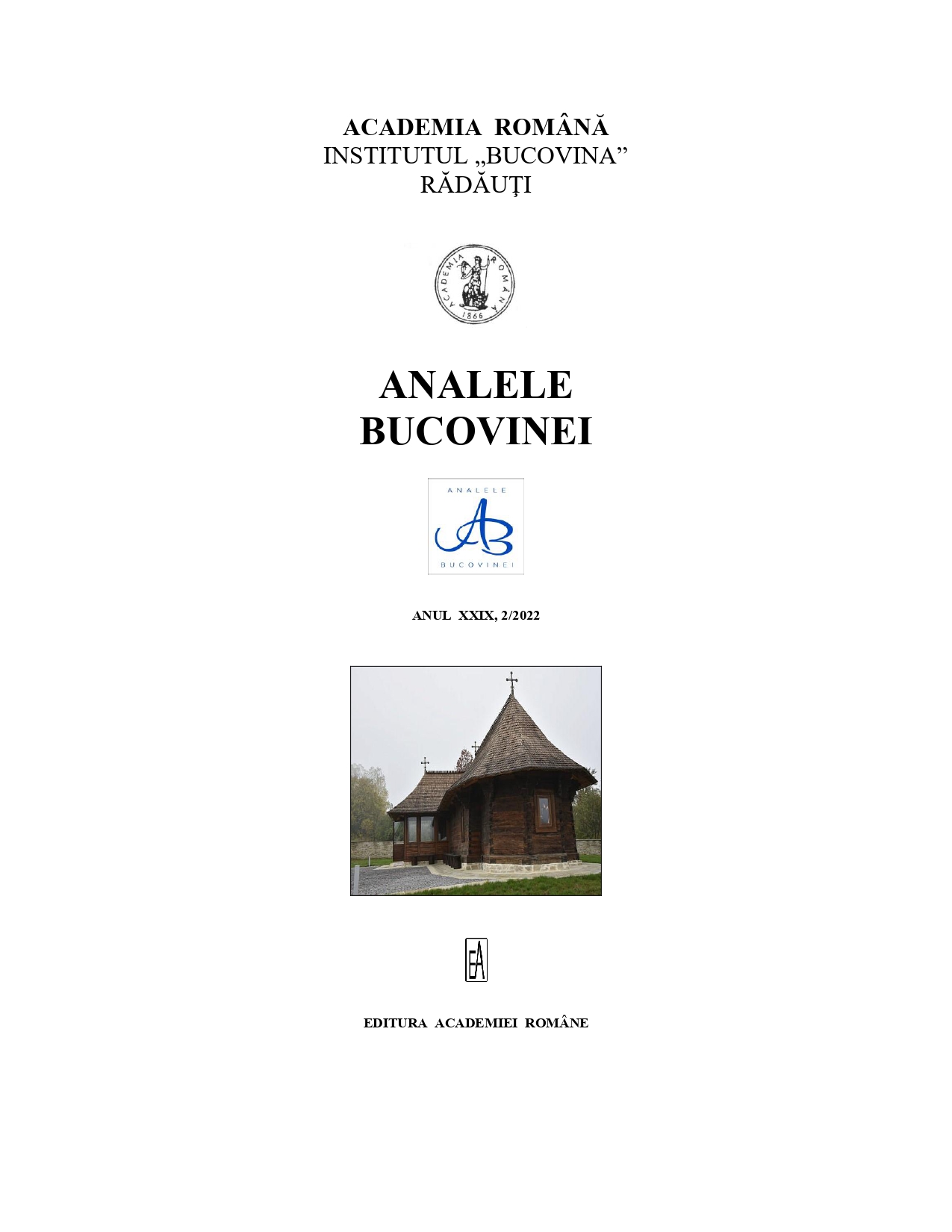CĂILE DE COMUNICAȚIE DIN BUCOVINA ISTORICĂ
The Communication Routes in Historical Bukovina
Author(s): Ovidiu BataSubject(s): History, Governance, Public Administration, Local History / Microhistory, 18th Century, 19th Century
Published by: Editura Academiei Române
Keywords: Bukovina; royal roads; Carpathian road; stone road; country roads; district roads; competition roads;
Summary/Abstract: Although Bukovina, compared to other Crown Lands, was the last one annexed by the Habsburg Empire, this province had a better road network than any of the other countries, especially the countries in the southeast.The Habsburg administration has been noted for taking good care of strategic state and district roads, which were well built and maintained. For the military control of the area, in order to facilitate the connections between the localities and in order to enhance the natural riches of Bukovina, since 1775 the Austrian administration rebuilt and redeveloped the old roads, created new ones, built durable bridges over the waters, modernized rafting by arranging the courses of the main rivers, it introduced the railways and the fast means of transmitting news at a long distance. The action was mainly carried out with the help of the local population, who were forced to work, with their arms, carts and animals. Soldiers deployed in Bukovina also participated in the works guided by specialists.As early as 1775, 70 wooden bridges were built for the rapid transport of General Splényʼs troops. Between 1783 and 1814 the old road Snyatin – Chernivtsi – Siret – Suceava – Gura Humorului – Câmpulung Moldovenesc – Vatra Dornei – Poiana Stampei – the border with Transylvania, now known as “Karpaten- or Franzensstraße”, was modernized. Between 1786 and 1809 a second road was built, connecting the Prut Valley and the Moldavian Valley through Dubăuți – Storojineț – Vicov – Marginea – Solca – Gura Humorului (known as the “stone road” or “Horaʼsche Straße”). In Bukovina, public roads, large and small, were divided into: country roads (“Reichsstraßen”, which the inhabitants called “royal roads”); district roads; communal/competition roads (“Konkurrenz-Straßen”). The classification of a road, the construction of a new one or the abandonment of an existing road, as well as the establishment of barriers and the establishment of tolls were done by a law of the country. A committee on district roads was responsible for the execution of the construction, the technical and economic administration, as well as the supervision of the condition of the roads in the political district.As “royal roads” were known: the Carpathian road, the cobbled road, the footpath (from the Carpathian road, from Mamaiești to Zaleszczyki), the customs road (from Siret to the Romanian customs from Sinăuți) and the Belgian road (on the Bistrița Aurie valley,from Iacobeni – Cârlibaba – Pasul Știol – Maramureș).In 1863, Bukovina had a network of 1,783 km of roads, of which 408 km were country roads, 70,3 km were customs roads, 9,5 km were salt roads, and the remaining1 295,8 km were district roads. In 1872 there were: 410 km of country roads with 23 tolls and 13 bridge tolls; 522,75 km of communal roads, with 18 tolls and two bridge tolls.Revenues from barrier and bridge charges were used to maintain roads. At the beginning ofthe 20th century, Bukovina was crossed by 26 district roads with a total length of 932 km,the countryʼs roads totaled about 430 km, and a network of almost 3,000 km of roads connecting the neighboring localities.
Journal: ANALELE BUCOVINEI
- Issue Year: 59/2022
- Issue No: 2
- Page Range: 395-416
- Page Count: 22
- Language: Romanian

